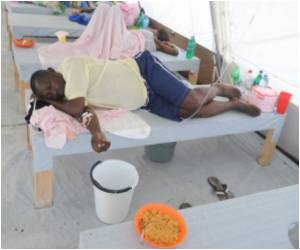An international collaboration of researchers has studied how a human herpes virus carried by the majority of the population packages its genetic information during infection.

Experts estimate that 60 to 90 percent of the world's population carry the human cytomegalovirus, or CMV, which is one of the eight herpes viruses that infect humans.
In healthy individuals, the virus lies dormant and does not cause overt disease. However, it poses a significant risk when contracted by unborn children – whose immune system has not matured yet – and individuals with compromised immune function.
CMV is the leading cause of birth defects resulting from any infectious agent. It affects one in 150 births in the US and most commonly results in hearing loss, but can also cause cognitive or physical anomalies and cerebral palsy. Once infected, the virus stays in the body for life and flares up only when the immune system is suppressed, for example in AIDS patients, transplant patients and cancer patients undergoing intensive chemotherapy.
For the study, published in the scientific journal Proceedings of the National Academy of Sciences (PNAS), Goodrum teamed up with collaborators in Germany and Israel.
The researchers investigated how a fundamental aspect of the human cell regulates the virus: the mechanism by which genetic information is packaged and stored. Understanding how the viral DNA behaves in the human host cells during dormancy and reactivation of the virus provides the basis for the development of drugs that could prevent the virus from "waking up" and causing disease.
"CMV is a master of human cell biology. From transcribing DNA into blueprints for proteins to the manufacturing of those proteins, from cell division to cellular metabolism, there is not a process this virus has not tweaked," Goodrum also said.
Source-Eurekalert
 MEDINDIA
MEDINDIA




 Email
Email







